
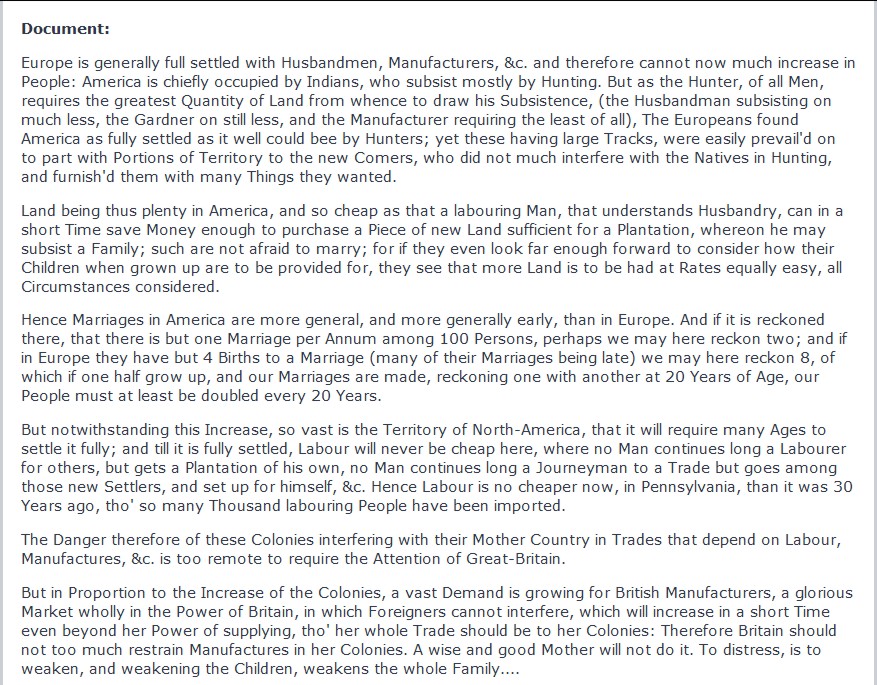
Ever since their ascension some two hundred years ago: Yes, in spite all the nonsense they have taught you about them being the ancient creators of civilization: it's only been about two hundred years since they were in charge. [Clarification - most people with expert knowledge of history will acknowledge that the "Thirty Years War" (1618 - 1648) which involved all of Europe, and which was fought against the Black Ruled "Holy Roman Empire" under the guise of Religious Wars between Catholicism and the newly created Albino Religions called "Protestantism": were really RACE WARS BETWEEN BLACKS AND ALBINOS FOR RULE OVER EUROPE].
Quote: And in Europe, the Spaniards, Italians, French, Russians and Swedes, are generally of what we call a swarthy Complexion; as are the Germans also, the Saxons only excepted, who with the English, make the principal Body of White People on the Face of the Earth. I could wish their Numbers were increased. And while we are, as I may call it, Scouring our Planet, by clearing America of Woods, and so making this Side of our Globe reflect a brighter Light to the Eyes of Inhabitants in mars or Venus, why should we in the Sight of Superior Beings, darken its People? why increase the Sons of Africa, by Planting them in America, where we have so fair an Opportunity, by excluding all Blacks and Tawneys, of increasing the lovely White and Red? But perhaps I am partial to the complexion of my Country, for such Kind of Partiality is natural to Mankind.
 |
 |
ADOLF HITLER in his book "MEIN KAMPF" (1925) often referenced the"Thirty Years Wars" as setting the tone for modern Germany.Here is what he said:
1) Quote: Here Hitler states, without philosophical elaboration, the doctrine which some groups of German intellectuals accepted as a bridge across which the German mind could pass to National Socialism. Civilization means the application of reason to life, a process which scored its greatest triumphs while Germany was struggling to emerge from the debris of the Thirty Years' War Goethe, Schiller, Kant, not to mention Lessing and Wieland, are reflections of the Western mind rather than original creations of the German soul. Even the great medieval Empire was based upon the triumph of Christianity. Therefore the patriot prefers to seek out the 'life forces,' the irrational impulses, which seem to him more chatacteristic of the German mind. This decision is sometimes couched in desperate phraseology: 'When I hear the word culture,' wrote Hans Johst (the first official Nazi playwright) 2) Quote: Unfortunately, our German nationality is no longer based on a racially uniform nucleus. Also, the process of the blending of the various primal constituents has not yet progressed so far as to permit speaking of a newly formed race. On the contrary: the blood-poisoning which affected our national body, especially since the Thirty Years' War, led not only to a decomposition of our blood but also of our soul. The open frontiers of our fatherland, the dependence upon un-Germanic alien bodies along these frontier districts, but above all the strong current influx of foreign blood into the interior of the Reich proper, in consequence of its continued renewal does not leave time for an absolute melting. It is not a new race that results from the fusion, but the racial stocks remain side by side, with the result that especially in critical moments when in other cases a herd would assemble, the German people run in all directions of the winds. The racial elements are situated differently, not only territorially but also in individual cases within the same territory. At the side of Nordic people there stand Easterners, at the side of Easterners Dinarics, at the side of both stand Westerners, and in between stand mixtures. This is, on the one hand, of great disadvantage: the German people lacks that sure herd instinct which is rooted in the unity of the blood and which guards the nation against ruin especially in dangerous moments, as with such peoples all the minor internal differences usually disappear immediately and the common enemy is confronted by the closed front of a uniform herd. In this side by side placement of our basic racial elements, which remained unblended, is rooted what with us one calls by the word superindividualism. In peaceful times it may sometimes render good services, but taken all in all it has deprived us of world domination. If, in its historical development, the German people had possessed this group unity as it was enjoyed by other peoples, then the German Reich would today probably be the mistress of this globe. World history would have Possibly a reference is made here to American protagonists of racial science, notably Lothrop Stoddard and Madison Grant. Some of this group had argued that the 'barbarism' of the Germans during the War had been due to the fact that the best elements of the German population has been annihilated during the Thirty Years' War.
|
Since then: The Dravidian Albinos of Europe - formerly of India via Central Asia, had busied themselves creating fake artifacts and writings to support their "Imagined Fantasy History". And when the opportunity arose to establish their dominance over the "Normal" world of Humans, by violence and Genocide, they greedily took it. Then, after gaining dominance over the "Normal" world of Humans, they went about the task of using their total control over media and all types of communication, to teach and spread their false "Fantasy History". The main object of their revisionists history were their former masters in Europe, the Black elite. These they simply Wrote-out-of-history, and attempted to destroy all of their artifacts, while at the same time, Writing themselves into their places, and creating fake artifacts to support their lie. With Europe's Black elite out-of-the-way, it was then easy - with the help of Brain-dead African leaders, to establish Black skin as synonymous with Slaves and underachievement.
 |
 |
With their newfound power over the worlds "Knowledge Databases" the European Albinos thought it appropriate to establish a racial uniqueness and exclusivity for themselves. Thus, by their telling, only they had straight-high-bridge-noses, Thin lips, Straight hair, Blue and colored eyes, Blond and colored hair, and White skin. The last three being classic indicators of Albinism, so in fact, they were trying to establish Albinism as "Normal" to Humans. Albinism is of course caused by a defective "P" gene, it is hereditary, and thus two Albinos mating can only produce another Albino. Blacks and Mulatto (Pigmented) Whites can have dormant defective "P" genes, so that when they mate with another "Carrier" of defective "P" genes, or an Albino, they will produce an Albino. But when Albinos mate with "Normal" people, the effects of Albinism are mitigated, and assuming mating with another of similar complexion, the offspring will be the same.
 |
 |
 |
 |
 |
By their own science the Albinos knew that all Modern Humans were of African origin, and thus "Black Skinned", so they attempted to explain away their "White Skin" by saying that they "Gradually" turned White in Europe, in order to better absorb the weak Sunlight in Europe, and thus aid their bodies production of Vitamin D. The problem with this lie, is that all through Human time in Europe, there are artifacts of Black Africans who retained ALL of their African features and color throughout history. Not only that, their own studies have confirmed that Blacks absorb UV rays better, and produce and store Vitamin D more effectively than Albinos: WITHOUT DAMAGE TO THE SKIN, (gullible Negroes beware of the nonsense that these people tell you). One of the many functions of Vitamin D, is to control the Calcium content of our bones: Blacks EVERYWHERE in the world, have "Bone Density" of 20% greater than Albinos - thus their lies are debunked by common knowledge. Plus our instinctive understanding of how Humans evolve, tells us that nature does not create deficiencies: Many European Albinos can barely tolerated a hour in the Sun before Sunburn sets in: Nature did not create that, the disease of Albinism did.
A note here: We at "Real History" did not invented the concept of Albinos MOVING into Europe. Sensible people have always known that the nonsense of European Blacks TURNING into Albinos, was merely fodder for the ignorant Albinos in denial, and whatever clueless Negroes they could pick-up with it. And of course, it gave ignorant Whites a bogus past that they could take comfort it. It seems their true beginnings as Nomadic wanderers of Central Asia, was not in keeping with their new-found status as masters of the world.
 |
Meanwhile sensible Albino scientists were trying to figure-out what really happened. Since Central Asia is the only place where you find old Albino skeletons, that is the place that they concentrated on. They were further assured that Central Asia was the place of Albino beginnings, because the Black historians of Greece and Rome wrote about the "Red-haired, Blue-eyed" (White) invaders coming into Europe from there.
In the book, The People of Lerna (Greece); Angel says this:
Page 29 - circa 2,000 B.C. those causing the destruction of Lerna - proto-Hellenes, were probably the first of several waves reaching Greece. Gimbutas (1963) sees the origin of these indo-European people as the steppe farmers east of the Caspian Sea, then later, the kurgan people north of the black sea.
 |
Kurgan hypothesis
In 1956 Marija Gimbutas introduced her Kurgan hypothesis combining archaeology with linguistics to locate the origins of the Proto-Indo-European (PIE) speaking peoples. She tentatively named the set of cultures in question "Kurgan" after the Russian term for their distinctive burial mounds and traced their diffusion into Europe.
The "Kurgan hypothesis" of Proto-Indo-European (PIE) origins assumes gradual expansion of the "Kurgan culture" until it encompasses the entire Pontic steppe, Kurgan IV being identified with the Pit Grave culture of around 3000 BC. Subsequent expansion beyond the steppes leads to hybrid cultures, such as the Globular Amphora culture to the west, the immigration of proto-Greeks to the Balkans and the nomadic Indo-Iranian cultures to the east around 2500 BC. The domestication of the horse, and later the use of early chariots is assumed to have increased the mobility of the Kurgan culture, facilitating the expansion over the entire Pit Grave region. In the Kurgan hypothesis, the entire Pontic steppes are considered the Proto-Indo-European homeland.
Pontic steppes - the Pontic-Caspian steppe is the vast steppeland stretching from the northern shores of the Black Sea as far east as the Caspian Sea, from western Ukraine across the Southern Federal District and the Volga Federal District of Russia to western Kazakhstan, forming part of the larger Eurasian steppe, adjacent to the Kazakh steppe to the east.
Of course all of these Albino theories place the Albino homeland closer to Europe than it really was. But why quibble, the point is that it was CERTAINLY NOT Europe!
But with all of their lies about "We Were Everywhere, and All Civilizations Were White:" and their fake Statues, Paintings, and writings to back them up. One thing the Albinos have yet to figure out a way to manufacture, is a Skeleton! So here we present Black History "By the Bones".
 |
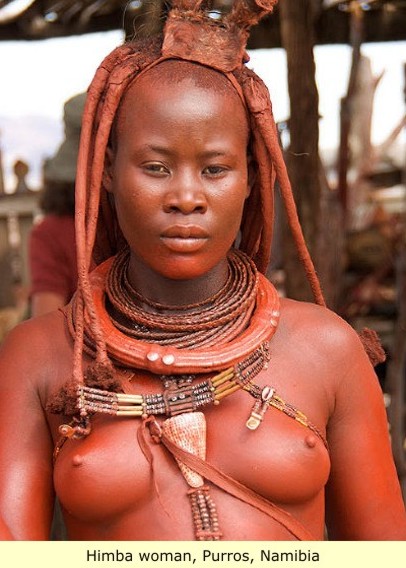 |
 |
| The Woman above will have a skull similar to the skull below. | The Man above will have a skull similar to the skull below - which is the same as a White Europeans skull. | |
 |
The Black phenotype encompasses ALL Human phenotypes, including the Mongol phenotype.
Contrary to the nonsense of European Albinos, there is NO exclusive European haplogroup. As an example: the Blacks found at Eulau Germany (2,600 B.C.) below: were haplogroup R1.
|
 |
 |
 |
 |
 |
 |
 |
 |
This new study is based on ancient DNA extracted from the fossilized skeleton, Kostenki 14 or K-14, who once was a short, dark featured man from approx. 36,000 years ago who died along the Middle Don River in Kostenki-Borshchevo, Russia.
Click here for the full article >>>
 |
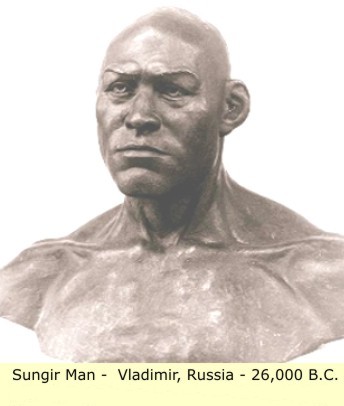 |
 |
 |
 |
 |
 |
|
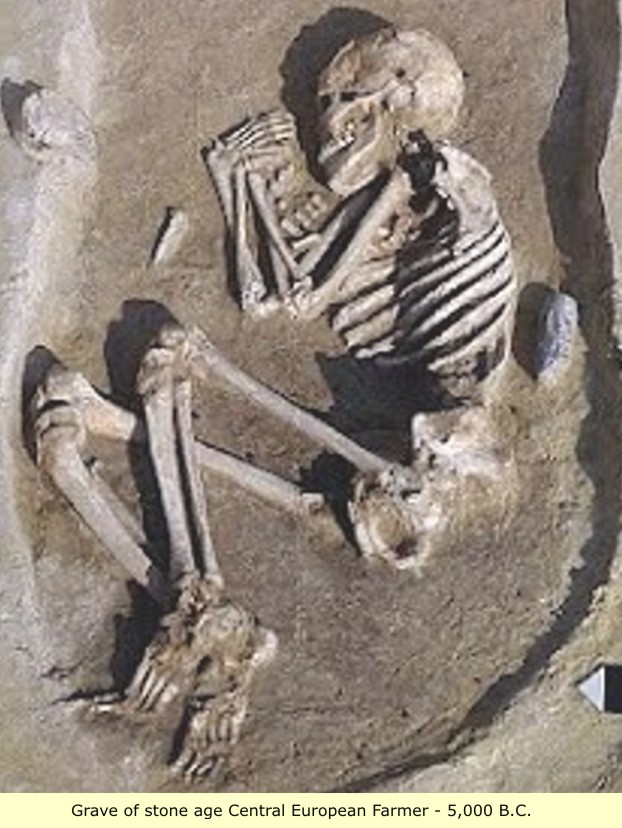 |
 |
 |
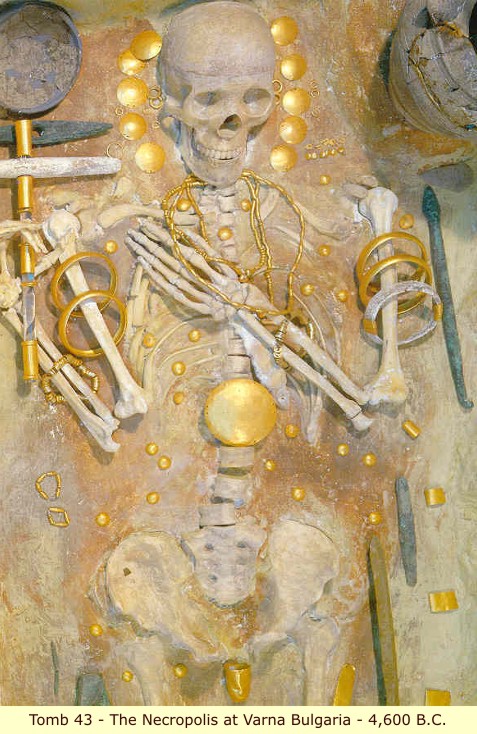 |
 |
 |
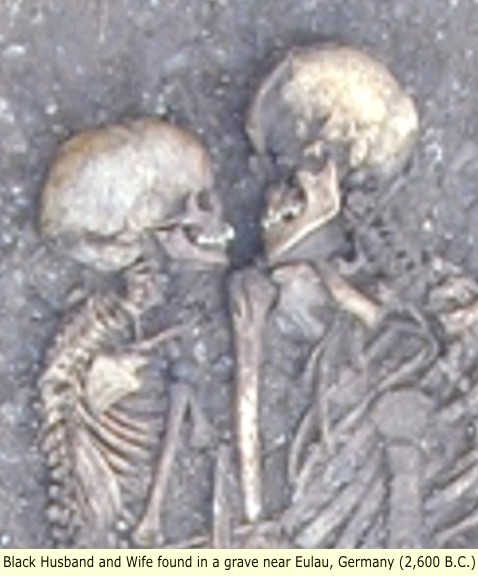 |
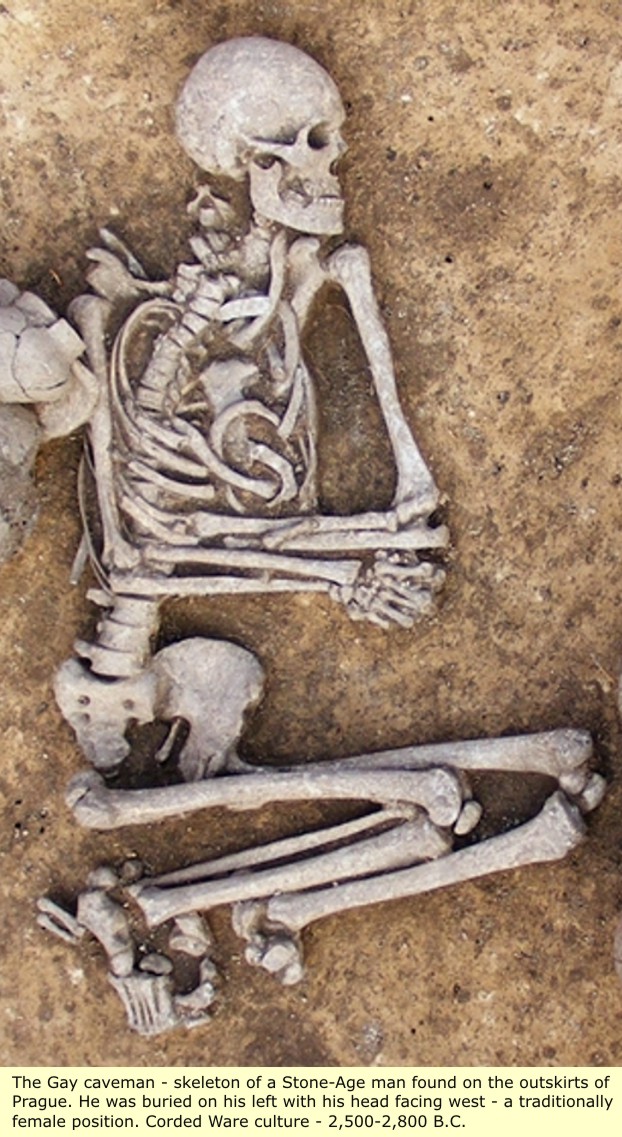 |
 |
 |
 |
 |
 |
| The ivory bangle lady came from a group of graves excavated in 1901, on what would have been the approaches to the Roman city of Eboracum, modern York. The burials were dated to the second half of the fourth century AD, and many had rich grave goods. |
 |
 |
 |
 |
 |
 |
 |
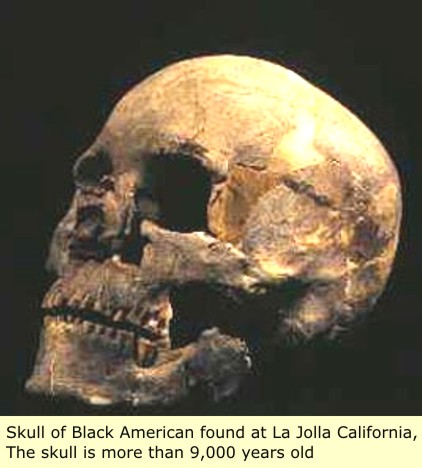 |
 |
Penon woman, found in Baja California Peninsula, Mexico, was found to be 12,700 years old.
|
 |
 |
 |
|
Central America |
South America |
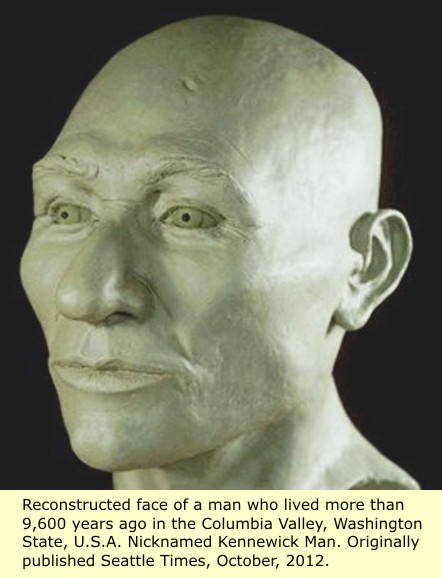 |
North America |
| Note: the skull found in "Warm Mineral Springs" Florida (circa 10,000 years ago), has NOT been reconstructed for obvious reasons, (Race issues in southern U.S.A.), however scientific analysis was done by a 2005 study, published by The National Academy of Sciences, Brazil: which found them consistent with other earliest American settlers. They described the remains thusly: the earliest South Americans tend to be more similar to present Australians, Melanesians, and Sub-Saharan Africans. See excerpts from the study below, as well as a link to the full study. |
 |
Taforalt (Grotte des Pigeons) is a cave located in the northern Oujda region of Morocco near the village of Taforalt. It contains significant prehistoric archaeological remains dating back 85,000 years and containing evidence associated with both the Epipaleolithic Iberomaurusian and the Middle Paleolithic Aterian industries. The site is located around steep hills, rocky mountains, and the natural vegetation of the thermo-Mediterranean biozone including Tetraclinis articulate and Pinus halenpensis.
Human occupation and natural processes in the cave have produced a 10 meter thick layer of archaeological material dating back to between 85,000 and 82,000 years ago. These occupation layers include pre-Mousterian, Aterian, and Iberomaurusian industries reflecting the Middle Paleolithic and Epipaleolithic. Excavations of the Iberomaurusian layers dating to approximately 12,000 years ago have recovered dozens of burials with some showing evidence of postmortem processing and potential ritual use with burials containing animal remains including horns, mandible, a hoof, and a tooth. The deep and highly stratified cave floor has yielded hearths, lithics, and shell beads, among a variety of artifacts of varying ages. The dryness of the cave has contributed to the notable level of preservation found among the remains and artifacts.
Excavation History
The cave was initially discovered in 1908 and has since led to major excavations dating from 1944–1947, 1950–1955, 1969-1977, and ongoing excavations from 2003 until at least 2015. Much of the field records from the early excavations have been lost. During the excavation of 1951 done by Abbé Roche, human remains were discovered that dated from the Aterian and Iberomaurusian (Epipalaeolithic) technological industries. The Roche excavation encountered 10 meters of archaeological deposits with the Iberomaurusian occupying the top 2–3 meters. This same stratification has been encountered in the subsequent excavations in other parts of the cave. Because of the dozens of skeletons located by Roche in the 1950s and the burials located during the Bouzouggar and Barton excavations taking place since 2003, Grotte des Pigeons represents what is likely the earliest and most extensively used prehistoric cemetery in North Africa.
Artifacts
The lithic collections recovered from the excavations at Grotte des Pigeons reflect a wide range of technologies and include unretouched and retouched flakes and bladelets, single and opposed platform bladelet cores, river cobbles, microburins, La Mouillah points, backed bladelets, Ouchtata bladelets, obtuse-ended backed bladelets, side scrapers, large bifacial tools, shell beads associated with bifacial foliates and tanged tools associated with the Aterian culture, and potential rock palettes.
Animal remains found at the site largely appear to be food waste though excavations in the 1950s and 2000s, 2010s have revealed burials associated with antelope horns, bovine horns, and at least one horse tooth. The more sedentary Grey Series phase includes a substantial amount of land Mollusca remains in conjunction with hearths indicating extensive land snail collection and cooking. The earliest layers from approximately 80,000 years ago contain shell beads of the N. gibbosulus however analysis of these shells indicate that they were collected along the Mediterranean shore after they had been dead. Ash lenses from the Aterian levels around 80,000 BP contain large Otala punctate indicating small scale exploitation of land snails prior to the Grey Series.
Human remains
Sector 10, excavated by Barton and Bouzouggar, and the burial deposits excavated by Roche in the 1950s, form a contiguous and spatially demarcated collective burial area with dozens of closely spaced burials. The presence of both articulated and disarticulated bones indicates extensive use and reuse of the burial area with evidence of secondary burial and selective bone removal being practiced, often disturbing or truncating earlier burials. Some burials were covered by large stones preventing future disturbances by burials. The Roche excavations originally estimated that they had recovered the remains of approximately 180 individuals however subsequent research at the skeletal collections have adjusted that estimate to between 35 and 40 individuals.
These remains were not directly dated by Roche but based on the stratigraphy they were from a greater depth, and therefore greater age, than those in Sector 10. The recent excavations taking place in Sector 10 have recovered thirteen partially articulated skeletons along with a sample of disarticulated bones. Seven bone samples from Sector 10 yielded age estimates between approximately 15,077 and 13,892 years ago, corresponding to the base of the Grey Series deposits seen in Sector 8 excavations. Burials situated toward the front of the cave and those higher within the deposits are likely to be progressively younger, and hence contemporary with higher levels in the Grey Series deposits recorded in Sector 8. A range of funerary practices is apparent based on the grave excavations that have taken place. Some remains appear to have been primary inhumations while others appear to have sustained secondary inhumation after removal for potentially ritual practices. Evidence of deliberate post-mortem modification include cut marks that are not indicative of cannibalism and extensive ochre coloring with one grave, Grave XII, containing Individual 1 with both cut marks and ochre coloring present on the majority of the nearly intact skeleton. Roche’s excavations in the 1950s yielded a single mandible from the Aterian levels.
A 2003 analysis of masticatory and non-masticatory dental modifications among the remains recovered in the 1950s reflected a very high rate (90%) of avulsion of the upper central incisors which subsequently led to increased usage of the proximal teeth. Ritual tooth removal is known elsewhere in this region at other points in prehistory and history and likely took place during the entrance to adulthood. The food processing tasks of the teeth are reflected in the heavy chipping, perhaps indicative of a gritty diet involving bone and shell. Half of the surviving teeth (51.2%) exhibited carious lesions while archaeological hunter-gatherers are expected to range between 0% – 14.3% and agriculturalists range between 2.2% - 48.1%. These numbers are likely a result of the acorns and pine nuts which would have been collected and processed, resulting in fermentable carbohydrates. The women in the population do not reflect the same proximal tooth wear as their upper central incisors were typically not removed.
Occupation site utility
The inhabitants of Grotte des Pigeons were hunter-gathers equipped with the knowledge of harvesting plants and animals as the archaeological context suggests some of the burials contained evidence of baskets and grind stones which were used for food preparation. Some of the foods harvested from their local environment included acorns, pine nuts, and land molluscs. The site exhibits evidence that the people that lived in this area used the cave year round by the Grey Series while staying there seasonally during the Yellow Series. The perforated marine shells present from the 85,000 – 82,000 year old level at Grotte des Pigeons and other sites in the nearby Maghreb dated from that period reflect an exchange network that likely existed in order to provide shells to communities 40 km from the coast (Taforalt) and further. While the meaning behind the beads cannot be discerned, the presence of an apparently widespread exchange network to facilitate their transport as well as their being worked for apparent ornamentation indicate some significance behind them.
Ancient DNA
A 2,000 analysis of non-metric dental traits indicated genetic continuity from the terminal Pleistocene onward in the Iberomaurusian and Capsian areas. In 2013, Iberomaurusian skeletons from Taforalt and the prehistoric site of Afalou were analyzed for ancient DNA. All of the specimens belonged to maternal clades associated with either North Africa or the northern and southern Mediterranean littoral, indicating gene flow between these areas since the Epipaleolithic. The ancient Taforalt individuals carried the mtDNA haplogroups U6, H, JT and V, which points to population continuity in the region dating from the Iberomaurusian period.
The Hofmeyr Skull is a specimen of a 37,000-year-old human skull found in 1952. It is one of the very few modern human skulls discovered in Africa south of Ethiopia and older than 20,000 years.
The skull was found in the 1950s on the surface of an erosion gully, a dry channel bed of the Vlekpoort River, near Hofmeyr, a small town in Eastern Cape, South Africa. No other bones or archaeological artefacts were found in the vicinity at the time of the skull's discovery. The skull is one of only a few African specimens of early modern humans dated over 30,000. Others are much more recent, dated to around 20,000 years ago.
The Hofmeyr fossil was compared with skulls from Sub-Saharan Africa, including those of the KhoeSan, who are geographically close to the site of the find. Using 3-dimensional measurement and mapping techniques, the study found that the Hofmeyr Skull is rather distinct from those of recent Sub-Saharan Africans, and that its closest affinities were with the people who lived in Eurasia in the Upper Paleolithic period, at the same time as the Hofmeyr skull.
Alan Morris said that the skull's owner "would not look like modern Africans or like modern Europeans, or like modern Khoisan people, but he is definitely a modern human being".
The above quote is just Albinos trying to say that ancient Africans looked like THEM! They are latching onto THIS particular African because South Africa has a COOLER climate - therefore they feel that they could survive there! But when you look at the reconstructions of ancient Eurasians from that time period, you see the obvious Albino lie.
 |
 |
 |
 |
 |
 |
 |
 |
 |
 |
 |
 |
 |
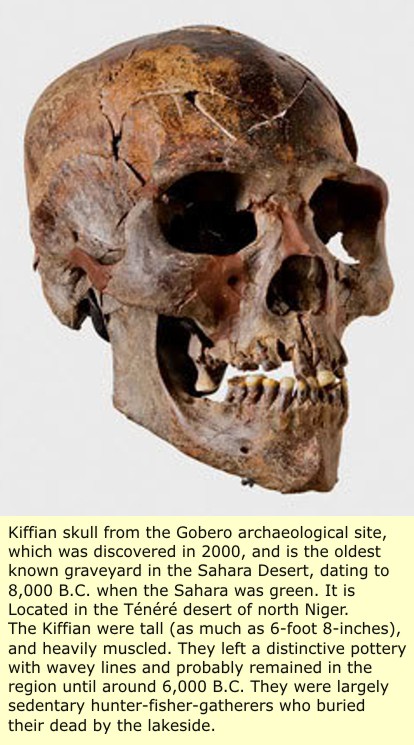 |
 |
 |
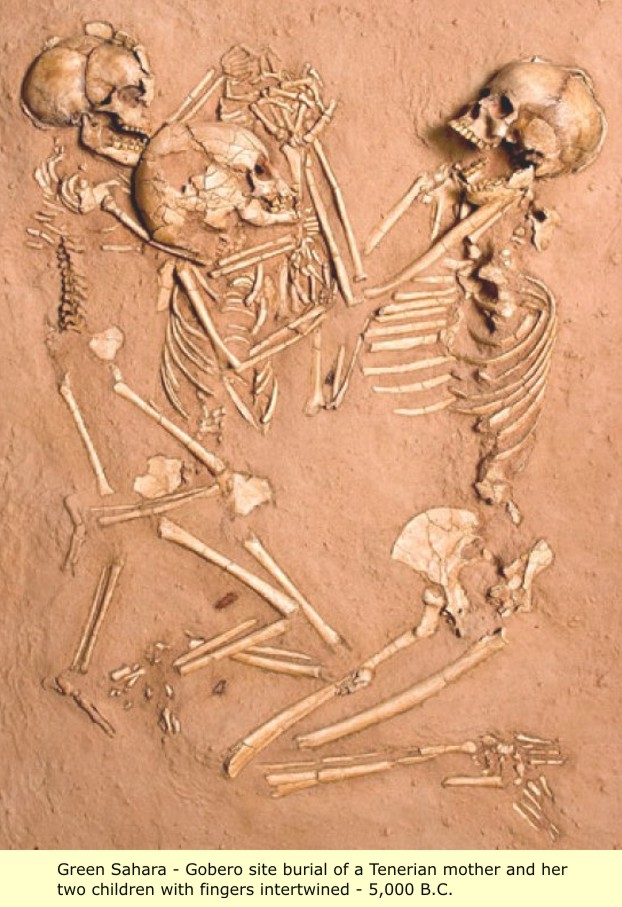 |
 |
 |
 |
 |
 |
Excavations at the site were initiated under John L. Caskey in 1952, whose efforts initiated the series of publications of Bronze Age Lerna, Lerna I-V, inspiring many other publications such as this one. Caskey famously bailed on the race issue with this statement: Quote – “It would be premature, and not within the scope of this paper, to discuss the questions of race and migration that are implicit in the proposals here advanced.”
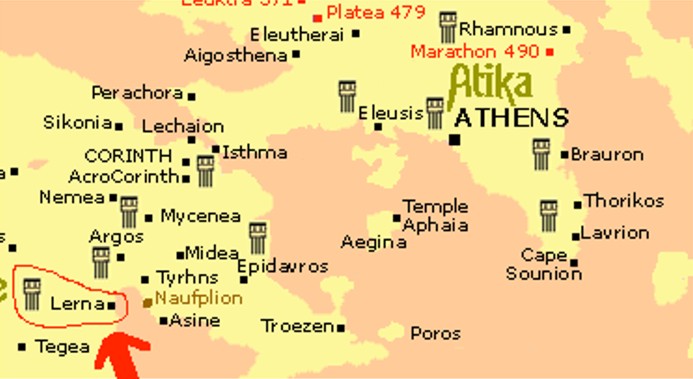 |
Occupation:
Lerna was occupied in Neolithic times, as early as the fifth millennium BCE, then was abandoned for a time before the sequence of occupation from the Early Bronze Age (Helladic period through the Mycenaean). On-site techniques of flint-knapping with imported obsidian and chert attest to cultural continuity over this long stretch of time, with reduction in the supply of obsidian from Melos testifying to reduced long-distance trade at the end of Early Helladic III, corresponding to Lerna IV.
Lerna has one of the largest prehistoric tumuli of Greece, accumulated during a long Neolithic occupation; then its crest was levelled and extended — as at Early Helladic Eutresis and Orchomenus— in a new settlement: this stratum, called Lerna III in the site's stratigraphy, corresponds with Early Helladic II at other sites. Lerna III lacks signs of continuity with the previous occupation; it is the site of a two-storey palace or administrative center that is referred to as House of the Tiles, for the terracotta tiles that sheathed its roof (an early example of tile roofing).
 |
This strongly fortified power center dates to the Early Bronze Age culture called Early Helladic, ca 2500 - 2200 BCE. Though five stages of occupation at Lerna have been identified, the site of "House of the Tiles", after it had been destroyed by fire, was not rebuilt upon, whether through respect or fear, until, at the end of the Middle Helladic period, shaft graves were cut into the tumulus of the House of Tiles, indicating that the significance of that monument had been forgotten. Lerna was used as a cemetery during the Mycenaean age, but was abandoned about 1250 BCE.
Ceramics of Lerna III include the hallmark spouted vessels that archaeologists name "sauceboats", with rims that sweep upwards into a curved spout, as well as bowls with incurving rims, both flat-bottomed and with ring bases, and wide saucers, sometimes with glazed rims, more pleasant for the drinker's lips. Jars and hydria have swelling curves. Painted decoration is sparse; stamped sealing form decorative patterns on some pieces, or rolled scribed cylinders have been used to make banded patterns. Remarkably, banded patterns made with the self-same seal have been found at Lerna, Tiryns and Zygouries. The burning of the House of Tiles brought the Third Period at Lerna to a decisive close; a low round tumulus marked its undisturbed, apparently sacrosanct site.
Lerna IV (Early Helladic III) marked a fresh start, not as a fortified seat of central authority this time, but as a small town, with houses of two and three rooms with walls of crude brick set upon stone foundations; several had central circular hearths. Narrow lanes separated houses. A great profusion of unlined pits (bothroi) was characteristic of this phase: eventually they became filled with waste matter, bones, potsherds, even whole pots. The pottery, markedly discontinuous with Lerna III, shows a range of new forms, and the first signs— regular spiral grooves in bases and parallel incised lines— marking the increasing use of the potter's wheel. Painted linear decoration in dark glaze on the pale body is characteristic of Lerna IV. Caskey identified early examples of the ware that in Middle Helladic contexts would be recognized as Minyan ware, and, among the few examples of imported pottery, a winged jar characteristic of Troy, perhaps Troy IV.
Lerna V is continuous with the preceding phase, distinguished largely by new styles in pottery with the sudden, peaceful introduction of matte-painted ware, the thick-slipped Argive version of gray Minyan ware, and a vigorous increase in the kinds of imported wares, coming from the Cyclades and Crete (Middle Minoan IA). A new custom of burying the dead in excavations within the houses or between them is universal at the period.
 |
John Lawrence Angel (1915–1986) was a British-American biological anthropologist. He was appointment in 1962 as Curator of Physical (Biological) Anthropology at the National Museum of Natural History, Smithsonian Institution. This book, The People of Lerna was published in 1971.
On page 5 Angel says this: Quote: “This is a visual classification and approach of the sort which we all use in everyday life. For this reason I use visual appraisal and not the arbitrary combinations of indices which Dixon 1923, and Hooton 1930 used, nevertheless, the history of anthropology shows typologies to be dangerous; as oversimplifications, they have been used for the worst purposes of generalizations and racism.
Then the degenerate racist goes on to use terms to describe what are inescapably Black skulls, with Albino related terms such as "Basic White, Nordic, Alpinoid".
Timeframe - Early, Middle, late Neolithic - 6,000 - 5,000 - 4,000 B.C.
Early bronze 3,000, (Early Helladic III starting at 2,200 B.C.
Middle bronze - late Helladic I-II – 2,000-1,600 B.C.
Late bronze late Helladic I-III and Mycenaean – 1,600 – 1,150 B.C.
Early iron age 1,150-650 B.C.
Geometric ceramic period - 850-650 B.C.
Page 29 - circa 2,000 B.C. those causing the destruction of Lerna - proto-Hellenes, were probably the first of several waves reaching Greece. Gimbutas (1963) sees the origin of these indo-European people as the steppe farmers east of the Caspian Sea, then later, the kurgan people north of the black sea.
Angels time of circa 2,000 B.C. for entry of the Albinos into Greece is not consistent with other evidences of their arrival: i.e. The exodus of some Black Europeans (exodus of the "Sea People" circa 1145 B.C.) such as the Peleset and Tjeker (Minoans) of Crete, they would later be known as the “Philistines” after they had settled in Southern Canaan. Over time, this area became known by a form of their name “Palestine”. The Lukka who may have come from the Lycian region of Anatolia, The Ekwesh and Denen who seem to be identified with the original (Black) Greeks, The Shardana (Sherden) who may be associated with Sardinia, The Teresh (Tursha or Tyrshenoi), the Tyrrhenians - the Greek name for the Etruscans, and The Shekelesh (Sicilians?), during the reign of Egyptian Pharaoh Rameses III. And earlier (circa 1,500 B.C.) the return of the Albinos to their homeland of India, as the invading Arian's/Aryans.
As is typical with European Albinos, they refuse to admit what they are - Albinos, or clearly state where they came from - Central Asia. Herodotus makes it clear that they were NOT Hellenes, but rather were Barbarians absorbed by the Hellenes.
Herodotus Book 1 - CLIO:
[1.58] The Hellenic race has never, since its first origin, changed its speech. This at least seems evident to me. It was a branch of the Pelasgic, which separated from the main body, and at first was scanty in numbers and of little power; but it gradually spread and increased to a multitude of nations, chiefly by the voluntary entrance into its ranks of numerous tribes of barbarians.
It should be pointed out at this time that "Modern Albino Europeans" are NOT the same people as these first Albino European invaders. Today's White Europeans are the descendants of Albino invaders from Central Asia of the current era (circa 200 A.D. - 700 A.D.). These Albino invaders were what we call today: the Germanics, Slavs, Alans, Vandals, Turks.
Skull Types as defined by Angel:
A) Linear rugged skull, with reduced but sometimes wide upper face and strong jaws.
Basic white, Cro-Magnon, Eurafrican, (as in latest paleolithic Russia - Debets 1955, or Hotu 2 in north Iran - Angel 1952, or in north Africa from Nubia to morocco - Anderson 1968, Ferembach 1962, Biggs 1955, as well as in central Europe - Coon 1939.
Basic White type AI is close to the British Megalithic form and to the Atlanto-Mediterranean of Deniker and others. it is longer-faced, more linear than A3. Type A2 is a smaller version of the upper paleolithic norm and is broader based and more rugged than A3, the central basic white which approximates the Eurafrican, and is a smaller version of Cro-magnon. A4 is a squat-faced and low-headed version of A3 being more eastern than African. A5 is a more massive version.
B) Extremely gracile paedomorphic, linear, pinched-face,
Classic Mediterranean - clear only late at Wadi en Natuf and elsewhere in the steppe-desert edge from Anau in Turkestan westward to morocco - McCown 1939, Angel 1951, Ferembach 1962.
The classic Mediterranean type B1 is a generalized Mediterranean whereas B2 is the more angular form as often found in Egypt. types B3 more linear, B4 with the long face approximate the desert belt versions from north Africa and Siwah to Hissar and Kazakhstan.
C) Paedomorphic with reduced and rounded face, but keeping the wide Neanderthal skull base and brain, and hence a wide skull (Alpinoid) as at Solutre and Ofnet - Coon 1939, and elsewhere in central Europe.
Alpine C1 is typical central European alpine. C2 is a smaller version of this, C3 is the upper Paleolithic to Mesolithic form. C4 is short faced but narrow-nosed and with an almost flat occiput, it is eastern but not Armenoid form. C5 is a low-headed and squat-faced version of C4.
D) Forms with reduced massiveness, keeping Neanderthal anterior face, downgrowth and nose strength to resist oblique forward chewing stresses.
(Nordic-Iranian, Irano-Afghan, corded etc. as in Hotu 1, later at Sialk, Vallois 1939 and Hissar, Krogman 1940, in northern Iran, Ginsburg 1956, and with corded culture in Europe, Coon 1939.
Nordic-Iranian type D1 lies between Anglo-Saxon and keltic area norms. and D2 is the earlier pre-bronze age corded form which coon identifies. D3 is lighter and more hawk-nosed and is transitional to the Mediterranean type B4 and D4 (Iranian) which is the proto-Iranian of Vallois and proto-Nordic of krogman. D5 approximates coons Danubian-Hallstatt.
E) Direct paedomorphic transformations, large, high-vaulted mesocrane with big forehead and reduced face (Mixed Alpine) as in Hotu 3 at Jericho, Ofnet and Teviec in central and Western Europe.
Mixed Alpine E1 has A3 form puffed-out and more paedomorhhic. E2 is Nordic Alphine and E3 is Mediterranean alpine.
F) Long nose, big face, vaguely Neanderthaloid like forms like D or B, and comparatively short and high-vault (dinaroid, dinaric-mediterranean, as in central European Mesolithic at Hohlenstein and Kaufertsberg and much later in the near east, Angel 1951.
Dinaric- mediterranean type F1 is the lighter more Mediterranean version found in lower Egypt or Anatolia. F2 is the broader bigger-faced more dinaroid version. F3 is the low-headed east Balkan version with some Iranian face features. F4 has a more Iranian face and short vault and little occipital bulge.
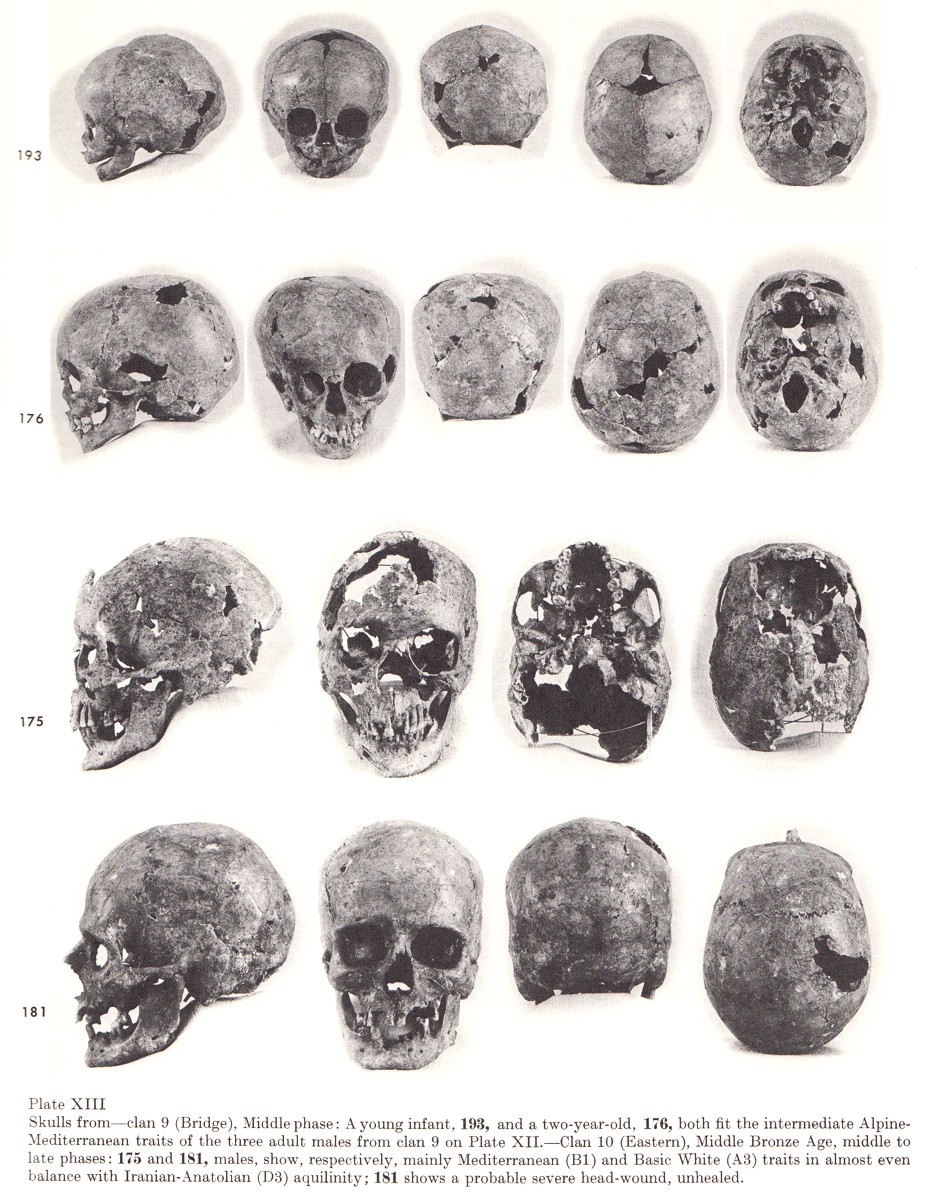 |
 |
 |
 |
 |
 |
 |
 |
 |
 |
 |
 |
 |
 |
 |
 |
 |
 |
| Click for Realhistoryww Home Page |